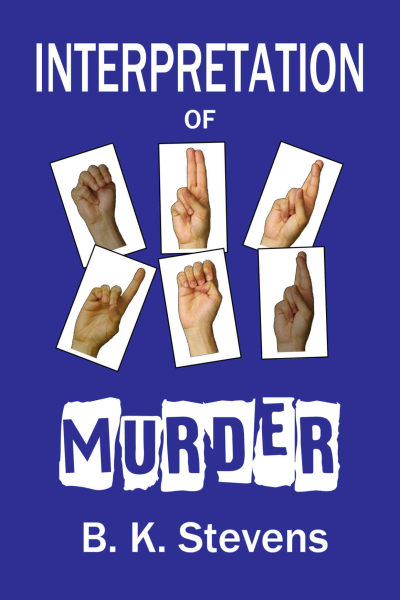Self-defense is an important element in both Interpretation of Murder and Fighting Chance. On July 10, I visited Judy Alter’s Judy’s Stew blog to talk about four basic principles of self-defense we can all use, whether or not we have any background in martial arts. (The expert who advised me on this post has an impressive background in martial arts–my husband, fifth-degree black belt Dennis Stevens). You can read the post below or find it here:
One Encounter, One Chance
You’ve probably seen it happen in movies or on television. Late at night, a woman walks into a
nearly empty parking garage, her eyes fixed on her cell phone as she reads a text message. Suddenly,
a man emerges from nowhere and grabs her arm. “Keep quiet,” he says, “and you won’t get hurt.”
Terrified, she tries to pry his hand away. It’s no good. He’s too strong. He shoves her into his car and
drives off. She feels helpless, doomed–and at this point, she probably is.
But did things have to reach this point? Not necessarily. Not if she had followed some basic principles of self-defense.
She wouldn’t have to be an expert. Jane Ciardi, the protagonist of my recently released mystery novel, isn’t an expert. She’s an American Sign Language interpreter who gets into some dangerous situations when she accepts a part-time job from a Cleveland private detective. But she’s taking a martial arts class, and she learns enough to protect herself.
Interpretation of Murder offers readers insights into deaf culture and the subtleties of sign-language interpretation. I hope it also offers them some insights into self-defense, ones they can use even if they’ve never studied martial arts. (I got the insights from someone who’s studied martial arts a lot–my husband, a fifth-degree black belt.) Here are four basic principles:
ï Be aware of your surroundings. If you’re walking into any situation that could conceivably prove dangerous, focus only on the situation, not on your cell phone or anything else. Before you take one step beyond safety, look all around for possible threats. On a Sunday afternoon, Jane strolls blithely into a parking garage, caught up in her thoughts, and finds herself face to face with someone who wants to harm her.
ï Make some noise. It’s easy to be scared into silence, especially if an attacker orders you to keep quiet. But getting noisy is often the best way of getting help. Also, yelling gets your spirits up and helps you feel stronger, and it’ll probably startle your attacker: Attackers expect victims to be passive, so a confident roar might send them running. In the parking garage, Jane ends the danger by shouting a greeting to a stranger passing by. The stranger clearly thinks Jane’s crazy, and maybe the shout wasn’t necessary–maybe Jane’s enemy wouldn’t have attacked anyway. But risking embarrassment is better than risking injury.
ï Don’t be predictable. Although any resistance will probably take an attacker by surprise, unexpected moves are especially effective. In our opening example, the woman tries to pry the man’s hand from her arm–utterly predictable, and since he’s stronger, he simply has to tighten his grip. It would’ve been better to pull his hair, claw at his eyes, stamp down on the arch of his foot. In one desperate battle, Jane fights back from a hospital bed, improvising wildly and using everything within reach–including a potted cactus–to defeat an opponent determined to kill her.
ï Don’t get in the car. In her martial arts class, Jane learns the Japanese principle of ichi-go, ichi-e–“one encounter, one chance.” In general, it means making the most of any opportunity. Applied to life-threatening situations, it means realizing you may not get more than one chance to defend yourself. If an attacker tells you to get in the car, it might seem smart to obey. Maybe you’ll placate the attacker by cooperating; maybe you’ll get a better chance to fight back later. That’s a mistake. If attacker tries to do anything that will reduce your ability to resist–tie you up, force you into a car–that’s the time to fight back. Fight as hard as you can, as long as you have to, until you can get away. It’s natural to try to avoid fights, and no decent person enjoys hurting somebody. But if your life’s in danger, delay can be fatal. Treat any chance to save yourself as the only chance you’ll get. For all you know, it is.
You can learn about more principles of self-defense by reading Interpretation of Murder. (And I definitely hope you do read it!) Undeniably, though, taking a martial arts class is the best way of learning more, and of building the skills and confidence that could make a crucial difference for you some day.
